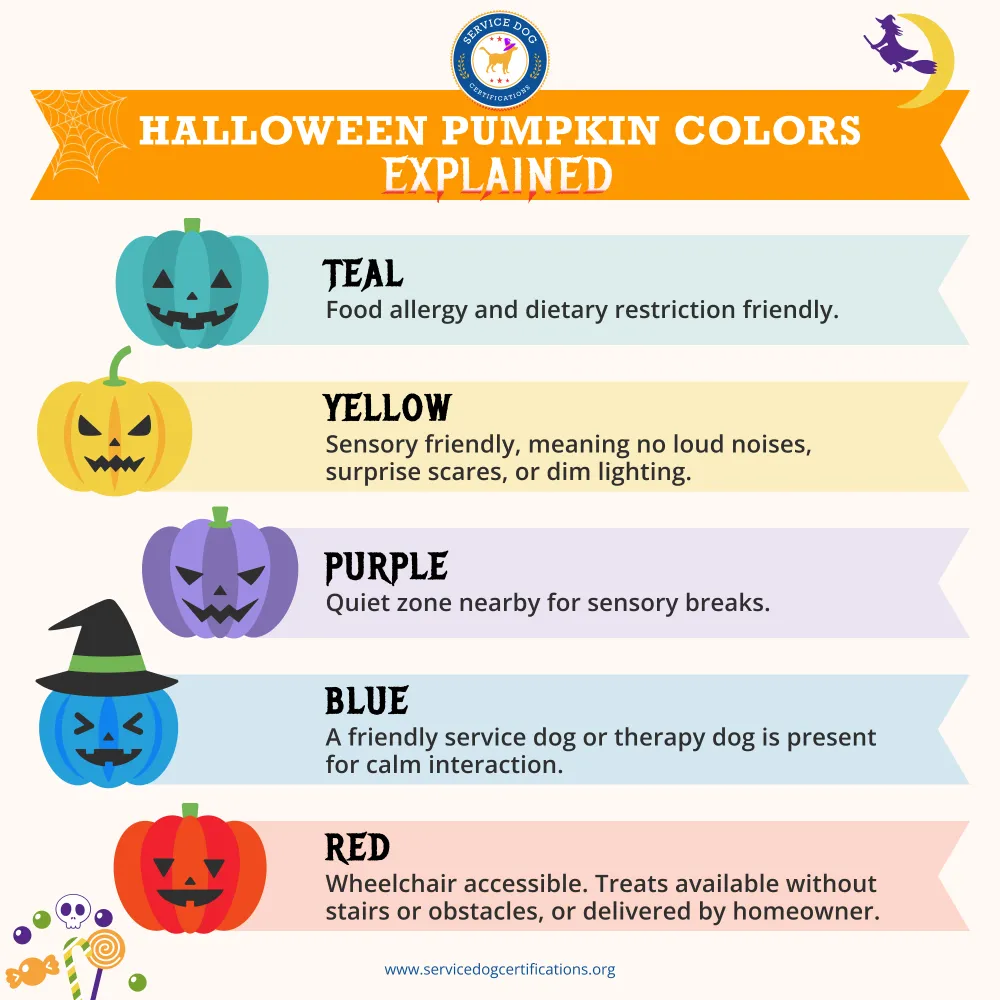What Each Pumpkin Color Means for Halloween

Halloween is a holiday for everyone, including children and adults with disabilities, sensory sensitivities, or food allergies. And this is where the Teal Pumpkin Project began. An initiative started by the Food Allergy Research & Education (FARE) encourages offering non-food treats to make trick-or-treating safer and more inclusive for children with food allergies or other conditions. So, when you see a teal pumpkin outside a house, it signals that this home offers non-edible treats, such as glow sticks, stickers, or small toys.
To build on this idea, additional color-coded pumpkins now help families recognize which houses best fit their needs. Use these color codes when decorating your porch or creating community guides.
Pumpkin Color Meanings
- Teal — Food allergy and dietary restriction friendly.
- Yellow — Sensory friendly, meaning no loud noises, surprise scares, or dim lighting.
- Purple — Quiet zone nearby for sensory breaks.
- Blue — A friendly service dog or therapy dog is present for calm interaction, similar to the emotional support animals you’ll see at airports to help keep passengers calm.
- Red — Wheelchair accessible. Treats available without stairs or obstacles, or the homeowner walking the candy to the street for delivery.
Share this image on your site
We’ve included a printable version if you’d like to display this information at your home or distribute it during PTA or HOA meetings.
How to Participate
Purchase or paint a pumpkin in the color that matches your setup and place it where it’s easy to see, such as by your driveway, walkway, or front door.
You can find pumpkins at:
- Craft stores (plastic pumpkins, paintable pails)
- Grocery stores and local markets
- Farms and school fundraisers
- Home improvement and garden centers
Have a safe and inclusive Halloween from the Service Dog Certifications team.
About the Author: The writing team at Service Dog Certifications is made up of folks who really know their stuff when it comes to disability laws and assistance animals. Many of our writers and editors have service dogs themselves and share insights from their own experiences. All of us have a passion for disability rights and animals.
Related Articles

How Dogs Can Calm Anxiety
A person suffering from anxiety attacks experience many risks, and it’s one of the reasons why it’s prudent to consider having a service dog or emotional support animal as a companion. The animal can keep the environment safer for the individual and below are some of the ways a dogs can calm anxiety: 1) Dogs […]

Read More

How Dogs Stop Panic Attacks
When a panic attack hits, your heart races, chest tightens, and thoughts scramble, leaving you in a vulnerable state. Debilitating panic attacks can qualify as an ADA disability, and a psychiatric service dog can be trained to stop a panic attack by doing the following: • Performing deep pressure therapy that switches your nervous system […]

Read More

Service Dogs for PTSD
Service dogs for mental health, known as psychiatric service dogs (PSD), can help certain people with post-traumatic stress disorder (PTSD). A PTSD service dog can legally accompany their handler in areas open to the public, residential buildings that ban pets, and on airplanes. In this article, we will explain how a service dog can assist […]

Read More
